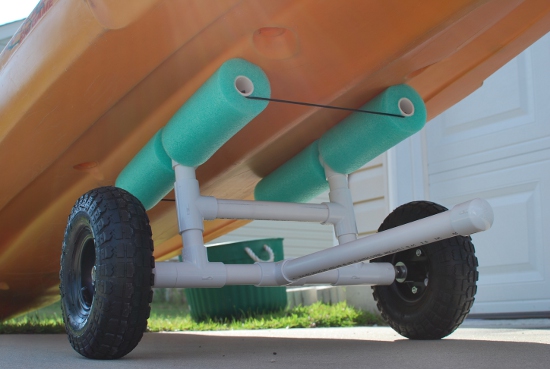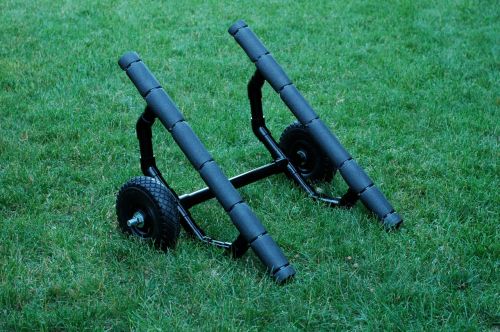Mark Ezrin
Member
My apologies for an off plumbing question, but this is probably the best place to get my question answered.
I'm building a small cart to transport a heavy kayak. It is 72 lbs without gear and probably pushing 100 lbs after adding gear.
I'm building this out of PVC schedule 40 pipe and fittings. Am I going to see a difference in strength/durability between 1", 1 1/4" or 1 1/2" PVC? Wheels supporting it, FWIW, are 10" pneumatic tires from Harbor Freight and the axle is 5/8" threaded rod. I'll probably add clevis pin retaining clips or a clevis pin to make parts of the kart able to break down.
None of the individual PVC pieces are very long so there won't be a lot of flex with respect to the PVC itself.
Here are some images just to give you an idea of what I'm building. The final design is still in the works as I might configure it to add a 2nd set if the weight is too much.


Thanks so much for humoring me.
I'm building a small cart to transport a heavy kayak. It is 72 lbs without gear and probably pushing 100 lbs after adding gear.
I'm building this out of PVC schedule 40 pipe and fittings. Am I going to see a difference in strength/durability between 1", 1 1/4" or 1 1/2" PVC? Wheels supporting it, FWIW, are 10" pneumatic tires from Harbor Freight and the axle is 5/8" threaded rod. I'll probably add clevis pin retaining clips or a clevis pin to make parts of the kart able to break down.
None of the individual PVC pieces are very long so there won't be a lot of flex with respect to the PVC itself.
Here are some images just to give you an idea of what I'm building. The final design is still in the works as I might configure it to add a 2nd set if the weight is too much.

Thanks so much for humoring me.
